Why Are Romania's Manufacturers Replacing Manual Handling with Pallet Inverters?
Your warehouse team is working hard, but the process of transferring goods from one pallet to another is a constant bottleneck. Manual handling is slow, and every year, you see good workers sidelined by back injuries. You also see the cost of damaged products, dropped boxes, and rejected shipments eating into your profits. It feels like you're paying more for an inefficient and risky process. What if there was a way to solve these safety, speed, and damage issues with a single piece of equipment? Many are discovering that a pallet inverter is not just a machine; it's a powerful solution to these persistent problems.
Romanian manufacturers are replacing manual handling with pallet inverters primarily to increase operational efficiency, enhance worker safety, and reduce product damage. This switch automates a labor-intensive process, allowing companies to cut direct labor costs, minimize workplace injuries, and protect their goods, leading to a swift return on investment.
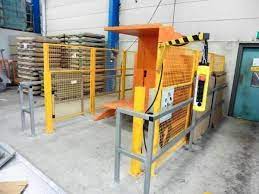
I’ve spent my entire career in and around packing machine factories, first as an engineer and later as a factory owner myself. I've seen firsthand how a simple change in process can have a massive impact on the entire operation. The move from manual handling to an automated solution like a pallet inverter is one of those changes. In this article, I want to break down the exact reasons why this technology is becoming so popular in places like Romania. We will look at the direct impact on costs, safety, product quality, and the financial return you can expect. Let's get into the details.
How Does a Pallet Inverter Directly Address Rising Labor Costs and Shortages in Romania?
Finding good, reliable workers is getting harder and more expensive in Romania, just like in many other parts of the world. You budget for a team to handle pallet-related tasks, but then you face high turnover, rising wage demands, and the constant challenge of finding people willing to do physically demanding work. Your operations depend on this manual labor, and when someone calls in sick or quits, it can slow down your entire production line. A pallet inverter offers a stable, one-time investment that works tirelessly, shift after shift, without asking for a raise.
A pallet inverter directly addresses labor costs and shortages by automating the task of load transfer. This allows one operator to safely and quickly perform a job that previously required several workers, significantly reducing the company's dependency on manual labor and cutting associated payroll expenses.
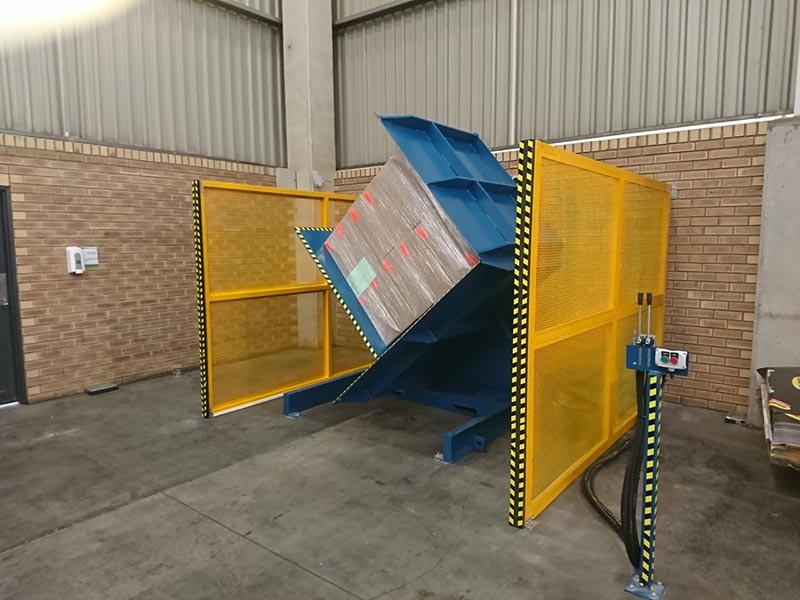
Diving Deeper into Labor Efficiency
Let's explore how this machine transforms your labor dynamics in very practical terms. It's not just about replacing people; it's about making your entire operation smarter and more resilient.
The Direct Impact on Your Payroll
The most obvious benefit is the reduction in direct labor costs. A manual pallet-swapping process might require two or three workers to de-stack and re-stack a pallet, a process that can take 15-20 minutes. A pallet inverter allows a single forklift operator to do the same job in under 60 seconds. You are not just saving the salaries of one or two workers. You are also saving on associated costs like benefits, training, and overtime. When you multiply this saving across multiple shifts, every day of the year, the financial impact becomes significant. This is not about eliminating jobs but about optimizing your workforce. The workers who were previously doing this strenuous, repetitive task can be retrained for higher-value roles that require human skill and oversight, such as quality control or machine maintenance.
Overcoming the Labor Scarcity Challenge
In many industrial regions, there is a real shortage of people willing to take on physically demanding warehouse jobs. This scarcity drives up wages and makes it difficult to scale your operations. A pallet inverter solves this problem. It makes your company less vulnerable to fluctuations in the local labor market. You are no longer desperately searching for multiple people to fill these roles. Instead, you need one skilled operator. This stability is crucial for long-term planning and ensures that your production targets are met consistently, without being held back by a lack of available manpower. It turns a variable and unpredictable operational risk into a fixed, predictable asset.
Labor Cost Comparison: Manual vs. Pallet Inverter
| Metric | Manual Pallet Handling (2 Workers) | Pallet Inverter (1 Operator) | Savings & Benefits |
|---|---|---|---|
| Time per Pallet | 15-20 minutes | ~1 minute | Over 90% time reduction |
| Personnel Required | 2-3 workers | 1 forklift operator | 50-66% reduction in staff for this task |
| Injury Risk | High (back, shoulder strain) | Extremely Low | Drastically lower injury claims & insurance |
| Consistency | Varies by worker energy/skill | Perfectly consistent every time | Predictable throughput and scheduling |
| Training | Ongoing for new hires | One-time for operator | Reduced training overhead |
What Are the Key Safety Improvements When Switching from Manual Lifting to Pallet Inverters?
Think about the physical toll of manually unstacking and restacking a heavy pallet. Each box is lifted, turned, and placed. This repetitive bending, lifting, and twisting is a recipe for injury. A single back injury can lead to long-term employee absence, significant medical costs, and higher insurance premiums. The safety of your team is your responsibility, and relying on manual labor for such tasks creates a constant, unavoidable risk. A pallet inverter removes this hazardous manual process entirely, creating a fundamentally safer work environment.
The key safety improvement from a pallet inverter is the near-total elimination of manual lifting. By automating the process of turning a load, it prevents musculoskeletal injuries (MSIs) like back strain, which are the most common and costly accidents associated with manual pallet handling.
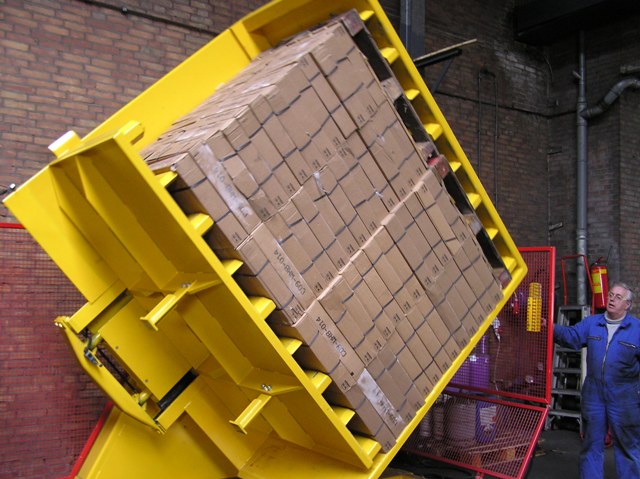
Diving Deeper into Workplace Safety
Protecting your employees is more than just a legal requirement; it's good business. A safer workplace is a more productive and positive one. Let's examine the specific safety benefits.
A Look at Ergonomics and Injury Prevention
Ergonomics is the science of designing the workplace to fit the worker, not forcing the worker to fit the workplace. Manual pallet handling is an ergonomic nightmare. It forces workers into awkward postures while handling heavy or unstable loads. The most common injuries are to the lower back, shoulders, and wrists. These are not minor issues; they can lead to chronic pain and long-term disability. A pallet inverter takes the human body out of this dangerous equation. The machine does all the heavy lifting and rotation. The operator simply controls the process from a safe distance or from the cabin of a forklift. This is a proactive approach to safety, preventing injuries before they can ever happen. It’s one of the most effective engineering controls you can implement to mitigate the risks of manual material handling.
Compliance with Health and Safety Regulations
Governments and regulatory bodies across Europe, including in Romania, have strict standards for workplace health and safety. These regulations often specify maximum weight limits for manual lifting and require employers to take all reasonable steps to reduce ergonomic risks. Using a pallet inverter demonstrates a clear commitment to these standards. It provides a documented, mechanical solution to a known hazard. This not only protects your workers but also protects your company from potential fines, legal action, and reputational damage associated with workplace accidents. In the event of a safety audit, having automated solutions like a pallet inverter in place is a powerful statement about your company's safety culture.
Injury Risk Profile: Manual vs. Pallet Inverter
| Hazard Type | Manual Pallet Handling | With Pallet Inverter | Safety Outcome |
|---|---|---|---|
| Musculoskeletal Injury | High risk of back, shoulder, wrist strain | Risk eliminated | Prevents the most common warehouse injuries. |
| Falling Object Injury | Medium risk from dropped boxes/unstable stacks | Low risk; load is clamped securely | Protects operator and nearby personnel. |
| Repetitive Strain Injury | High risk due to repetitive motions | Risk eliminated | Improves long-term health of employees. |
| Slips, Trips, and Falls | Medium risk around messy work areas | Low risk; work area is contained and clean | Creates a more organized and safer floor space. |
Can Pallet Inverters Really Improve Product Quality and Reduce Damage?
You invest heavily in producing high-quality goods. The final stage of handling and shipping should not be where that quality is compromised. Yet, with manual handling, it happens all the time. A tired worker might drop a box. An unevenly stacked pallet might shift and crush the items at the bottom. The packaging gets scuffed, torn, or dented, leading to customer complaints or outright rejections. A pallet inverter treats your products with care, ensuring they arrive in the same condition they left the production line.
Yes, pallet inverters significantly improve product quality by providing a secure, controlled, and gentle method for transferring goods. This mechanical process prevents damage from human error, such as dropping, improper stacking, and rough handling, which commonly occurs during manual transfers.
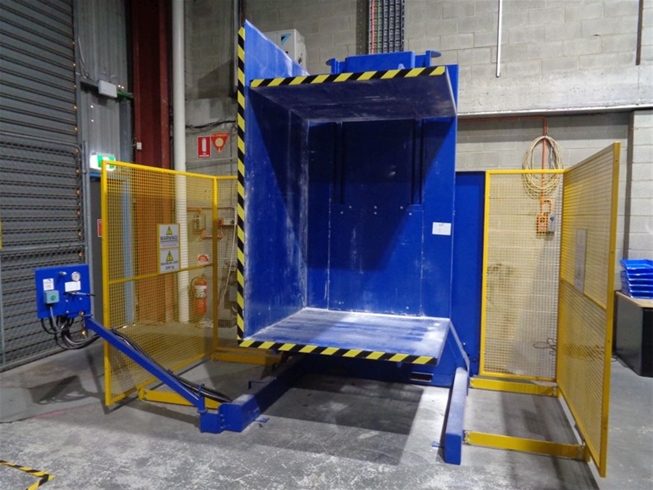
Diving Deeper into Product Protection
Reducing product damage has a direct effect on your bottom line. It's not just the cost of the lost product; it's the cost of disposal, returns, and the damage to your brand's reputation.
The Mechanics of Gentle Handling
A pallet inverter works by clamping the entire load securely from the top and bottom. The pressure is distributed evenly across the surface, holding the entire stack as a single, solid block. Then, it smoothly rotates the load 180 degrees. There are no sudden movements, no impacts, and no individual boxes being handled. This process is inherently gentle. For sensitive products, from bags of food ingredients to boxes of electronics, this controlled movement is critical. It prevents the internal shifting and settling that can damage goods, and it keeps the stack perfectly aligned. You can adjust the clamping pressure to suit the specific product, ensuring it's secure without being crushed. This level of precision is simply impossible to achieve with manual labor.
Preserving Packaging Integrity
Your product's packaging is its first impression on the customer. Scuffed, torn, or dirty boxes can suggest a low-quality product, even if the contents are perfect. Manual handling often involves workers pushing, sliding, and grabbing boxes, which damages the packaging. A pallet inverter touches only the top and bottom of the entire load. The individual boxes and their packaging remain untouched and pristine. This is especially important for consumer-facing goods or for companies that supply to major retailers with strict packaging standards. By protecting the packaging, you are protecting your brand's image and ensuring your products are shelf-ready the moment they arrive. It eliminates a common reason for costly chargebacks and returns from picky customers.
Common Damage Scenarios and How Inverters Solve Them
| Damage Scenario | Manual Handling Cause | Pallet Inverter Solution | Outcome |
|---|---|---|---|
| Crushed Corners/Edges | Dropping individual boxes, rough placement. | The entire load is handled as one block. | Boxes remain square and undamaged. |
| Torn Bags/Sacks | Snagging on splinters, being dropped. | Load is clamped; no individual handling. | Prevents punctures and spills. |
| Product Compression | Uneven re-stacking, leaning pallets. | The original stack integrity is maintained. | Load remains stable, preventing crushing. |
| Scuffed/Dirty Packaging | Workers' gloves, dirty floors, sliding boxes. | Only top/bottom of load is touched. | Packaging stays clean and presentable. |
What is the Typical ROI for a Pallet Inverter in a Romanian Manufacturing Plant?
As a business owner, every investment must be justified. You need to know how quickly a new piece of equipment will pay for itself and start generating a positive return. The idea of a capital expenditure can be intimidating, especially when you are focused on managing costs. However, a pallet inverter is not just an expense; it's an investment in efficiency and cost reduction. You need to look beyond the initial price tag and calculate its true financial impact.
The typical Return on Investment (ROI) for a pallet inverter in a Romanian manufacturing plant is remarkably fast, often falling between 12 and 24 months. This rapid payback is driven by a combination of direct labor savings, elimination of product damage costs, reduced insurance premiums, and increased operational throughput.
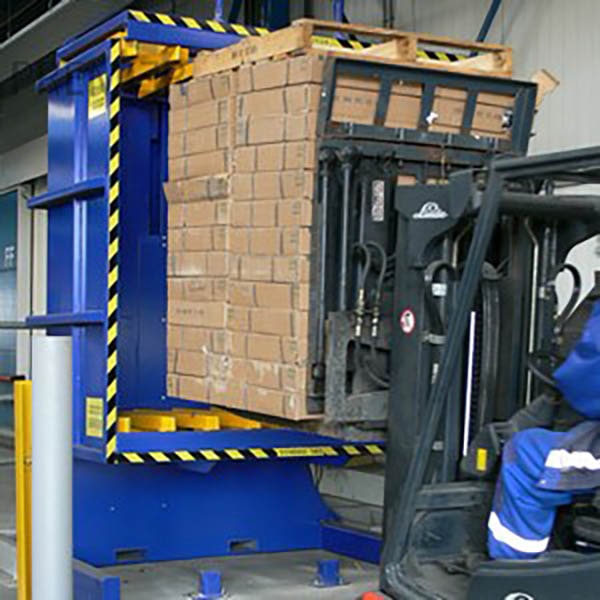
Diving Deeper into the Financial Return
Calculating the ROI for a pallet inverter is a straightforward exercise that can reveal a compelling business case. Let's break down the components that contribute to its fast payback period.
Calculating Your Payback Period
The formula for ROI is simple: (Net Profit / Cost of Investment) x 100. For a payback period, you calculate how long it takes for the savings to equal the initial cost. The key is to identify all the areas where you will save money. The biggest factor is labor. Calculate the annual cost of the workers who currently handle pallet transfers, including salary, benefits, and taxes. A pallet inverter can often reduce this cost by 50% or more. Next, calculate the annual cost of product damaged during this process. Even a 1-2% damage rate adds up to a significant number. Finally, consider the "soft" savings. Reduced injury risk can lead to lower insurance premiums. Increased speed means you can ship more products with the same facility, increasing revenue potential. When you add all these savings together, the annual figure is often a substantial portion of the machine's purchase price.
Factors Influencing ROI
The exact ROI will vary depending on your specific operation. A high-volume facility that operates multiple shifts will see a much faster ROI than a small, single-shift operation. The key variables include:
- Labor Costs: The higher the local wages, the faster the payback from labor savings.
- Product Value: If you are handling high-value goods, the savings from preventing even a small amount of damage will be huge.
- Throughput: The more pallets you need to switch per day, the more time and money you save with an automated solution.
- Pallet Quality Issues: If you frequently need to switch from high-quality in-house pallets to cheaper shipping pallets, the inverter becomes an essential part of your workflow, and the ROI is almost immediate.
Sample Payback Calculation
| Cost & Savings Item | Example Annual Figure (€) | Notes |
|---|---|---|
| A. Initial Investment Cost | - €25,000 | One-time cost for the machine. |
| B. Annual Labor Savings | + €20,000 | Saved salary/benefits of 1.5 workers. |
| C. Annual Product Damage Savings | + €5,000 | Based on reducing damage from 1% to 0.1%. |
| D. Annual Insurance Premium Reduction | + €1,000 | Potential savings from lower injury risk. |
| Total Annual Savings (B+C+D) | €26,000 | |
| Payback Period (A / Total Annual Savings) | ~11.5 months | The investment pays for itself in under a year. |
My Perspective as an Engineer and Factory Owner
When I started my journey, I was an engineer on the factory floor. I saw machines that were 15 or 20 years old, constantly breaking down and causing delays. I saw the frustration of the managers and the risks the workers had to take. Later, when I built my own factory, I promised myself I would make smart investments in technology to avoid those problems. This is the exact situation many factory owners like Javier Morales in Mexico, or his counterparts in Romania, face today. You have aging equipment, rising costs, and pressure to become more efficient.
A pallet inverter is not just a machine to flip pallets. It is a strategic tool. It’s a solution to the problem of aging, inefficient processes. It directly attacks your operational costs, a goal for any smart CEO aiming to lower expenses by 8% or more. It addresses the challenge of labor volatility. Most importantly, it removes a major bottleneck, which helps you increase your overall capacity utilization. When you can transfer loads from production pallets to shipping pallets in 60 seconds instead of 15 minutes, your entire logistics chain moves faster.
I believe in being more than just a supplier. A supplier sells you a machine. A partner helps you solve a problem. When a client comes to me, I don't just talk about the specifications of our equipment. I ask about their challenges. Are you facing high labor costs? Is product damage a problem? Are you trying to meet new safety standards? My goal, and the mission of SHJLPACK, is to provide a total solution. We share our knowledge to help you make the right choice, ensuring the equipment you select, install, and maintain will deliver the results you need. A pallet inverter is a perfect example of a small investment that delivers a huge return, moving you one step closer to a modern, efficient, and profitable operation.
Conclusion
Replacing manual handling with pallet inverters is a strategic move for Romanian manufacturers to boost safety, efficiency, and profitability in today's demanding market.



